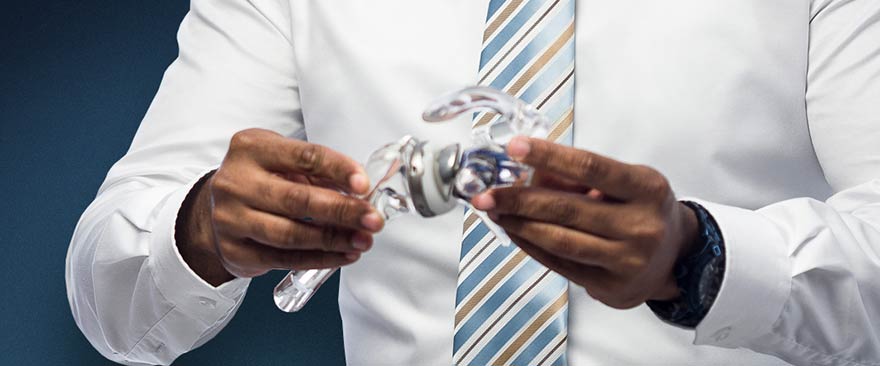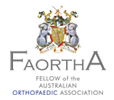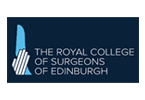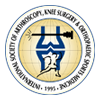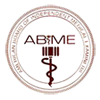Total shoulder replacement (TSR) describes a surgical procedure where a prosthesis or implant replaces the gleno-humeral joint (the shoulder joint). The conventional Total shoulder replacement is also called the Anatomic shoulder replacement to distinguish it from a Revers shoulder replacement.
Adelaide Orthopaedic Surgeon Dr Sunil Reddy specialises in Shoulder and Knee surgery and performs Total shoulder replacement and Reverse Total shoulder replacement for appropriate indications. He routinely offers “Patient-specific technology” in Shoulder arthroplasty – an MRI scan based 3D – prototyping technology that allows accurate placement of the glenoid (socket of the shoulder) component and may contribute to better outcomes.
Patient-specific technology in Joint replacement
It is a CT scan-based 3D-prototyping technology where 3D models of the arthritic joint as well as jigs specific to the patient’s anatomy are manufactured. These are then used during surgery to make accurate bone cuts or bone reaming and implant the prosthesis. Dr Reddy offers this technology to his patients undergoing Shoulder replacement surgery. He would gladly discuss these aspects of your care during the consultation.
Conditions
The procedure is usually required where either disease or trauma have made movement of the shoulder joint painful. Typical conditions which may require this procedure include:
Arthritis (osteoarthritis, rheumatoid, prior trauma related)
Arthritis is where the cartilage in joints wears away and pain results from the bones coming into direct contact with each other. Osteoarthritis is generally age related and is also referred to as Degenerative Joint Disease. It is common in people over 50. Rheumatoid arthritis is inflammation of the joint lining which often causes damage to and loss of cartilage. Prior trauma or damage to the shoulder joint sometimes also damages cartilage – referred to as Post-traumatic arthritis.
Fractures of proximal humerus (Hemi-arthroplasty)
Where a fracture is severe, it may be very difficult to put the segments of bone back together. Blood supply to parts of the bone may also be compromised and Dr Reddy may recommend shoulder replacement in the form of a Hemi-arthroplasty or more commonly Reverse Total Shoulder Replacement.
Osteonecrosis
Osteonecrosis (also known as avascular necrosis) is where blood supply to the bones is restricted or cut off, which can ultimately destroy the shoulder joint itself. Risk factors for this condition include any previous severe fracture (see above), overuse of steroids, deep sea diving and alcoholism.
Failure of previous shoulder replacement surgery
Sometimes previous shoulder surgery may fail, normally where the implant comes loose or moves out of position or may get infected. In this case a Revision shoulder arthroplasty may be indicated.
Surgery
Surgery involves replacement of the ball (head of the humerus) and also replacement of the socket (called the glenoid) that the ball fits into.
The procedure itself, which is conducted using conventional open surgery, normally takes around 90 minutes, requires a general anaesthetic and a hospital stay of 2-3 days.
During the surgery, the prosthetic components are attached to the bone/s and once this is complete, the wound is closed using absorbable sutures.
Specific Risks and Complications
Dr Reddy will explain the benefits, risks and complications of a Shoulder replacement in the Clinic to help you make an informed decision regarding your surgery.
Possible complications of this surgery include infection, injury to blood vessels or nerves, the prosthesis coming loose or dislocating and a 'frozen shoulder', where the shoulder is sore and stiff.
Post operative recovery and rehabilitation
Dr Reddy as well as the Physiotherapist will see you on day 1 following surgery and demonstrate exercises to be performed at home as well as advise on things to do and not to do.
It is important that you follow the advice and rehabilitation guidelines to give yourself the best chance of recovery and an optimal outcome.
- You would likely have a regional / nerve block for pain management apart from a general anaesthetic.
- You would usually stay in the hospital for 2-3 days, but may stay longer depending on the recovery.
- Please take regular pain medication as advised.
- Apply Ice packs 5 times for 10 min each time for the first two weeks.
- You will need to wear the sling full time for 4 weeks, but remove it thrice daily for 15-20 minutes each time to perform exercises.
- Please remove the sling for a shower, resting your arm by the side. The dressings are waterproof.
- After 4 weeks – You can come out of the sling to perform gentle activities of daily living.
- After 6 weeks – progress with exercises as advised by your therapist.
- Strengthening exercises usually start only after 3 months following surgery.
- Avoid lifting weights and push-pull movements for 3 months following surgery. The goal is to gradually achieve normal range of movement and strength of the shoulder over a 3-6 month period.
- Driving is permitted only once you come out of the sling and have achieved good control of the arm and a pain-free status. This is usually by the 6-8 week postoperative period.
- Please follow your therapist’s advice regarding exercises and follow the rehabilitation guidelines that you can view / download below.
